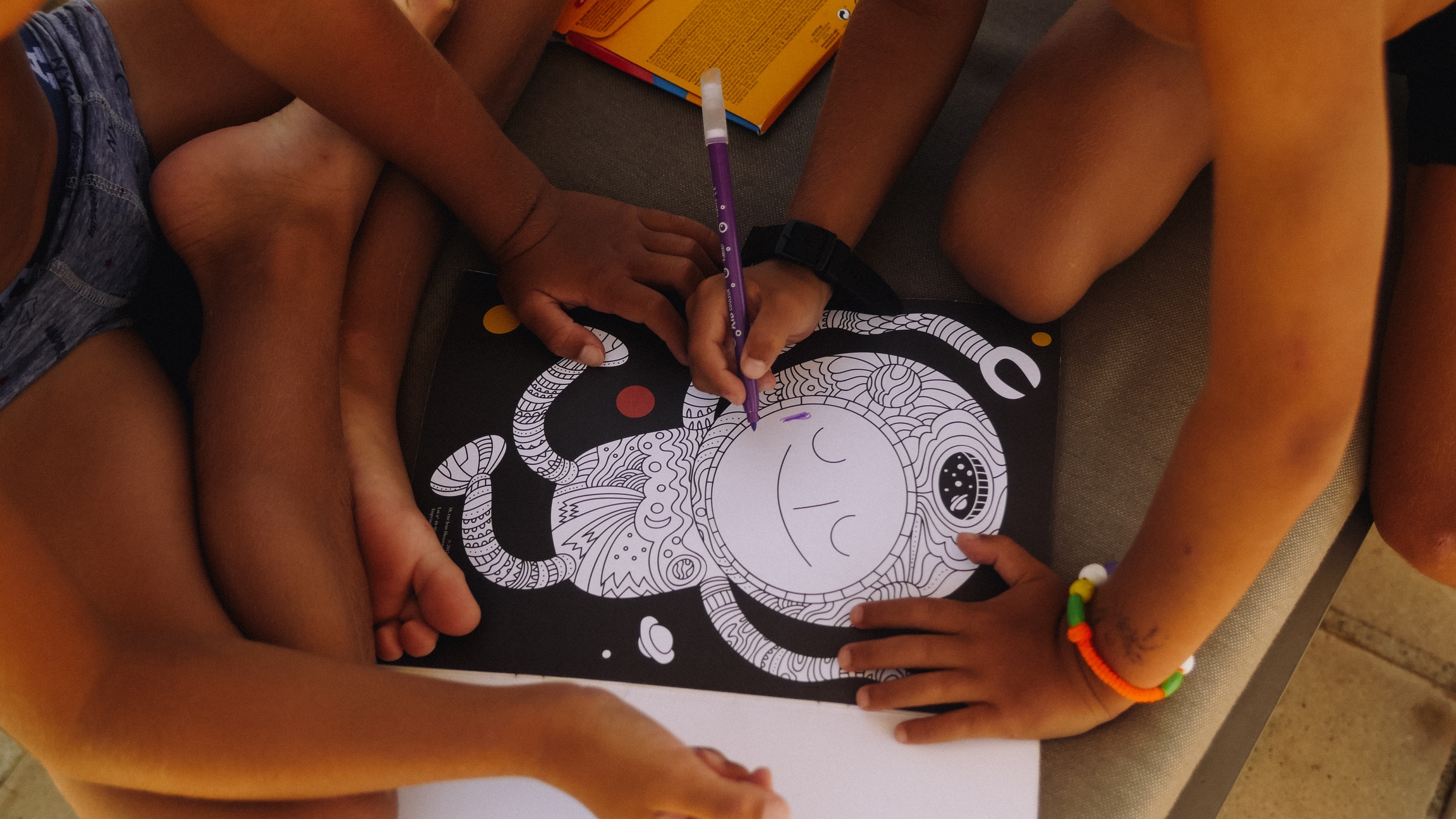How to Design a Child’s Bedroom with Educational Themes and Interactive Features?

Designing a child’s room goes beyond selecting the right color palette or purchasing the trendiest furniture. It’s about creating an environment that fosters growth and creativity whilst ensuring that the space remains functional and safe. Most importantly, a child’s room should be a reflection of their personality, interests, and dreams. With a little imagination and thoughtful planning, you can transform your child’s bedroom into a vibrant oasis of learning and play. Here’s how.
Integrating Educational Themes into the Design
When designing a child’s room, it is important to keep in mind that this is a space where your child will spend a significant amount of their time. As such, it’s a perfect opportunity to integrate educational themes into the design.
In the same genre : How Can You Implement Natural Pest Repellents in Your Home Garden?
To start, consider your child’s interests. Are they fascinated by the solar system? Do they love animals or plants? Maybe they’re always drawn to puzzles and brain teasers? Use these interests as a starting point to create a theme for the room.
Wall decals and posters are a cost-effective way to introduce educational themes. For instance, a wall mural of a world map can spark a child’s curiosity about geography and cultures. If your child is a budding scientist, consider decals that depict the solar system or the life cycle of a butterfly.
Also read : What Are the Top Eco-Friendly Paint Options for a Nursery?
Thematically appropriate furniture can also enhance the educational value of a room. For example, a desk with a built-in globe or a bookshelf shaped like a tree can support the overall theme and serve as a focal point in the room.
Creating an Interactive Learning Corner
Not all learning has to be formal. In fact, children often learn best when they’re having fun. This is why it’s a good idea to establish an interactive learning corner in your child’s room.
Start by dedicating a portion of the room to this purpose. Make sure this area is easily accessible and well-lit. Then, fill it up with resources that will spark your child’s interest and curiosity. This could include books, puzzles, art supplies, and educational toys.
Consider incorporating interactive wall features as well. These could be anything from a chalkboard wall for drawing and writing, to a magnetic board for science experiments.
Remember, the goal here is not to replicate a classroom, but rather to create an inviting space where your child will be excited to learn and explore.
Balancing Play and Rest in the Room Design
While it’s essential to incorporate educational themes and interactive features, a child’s bedroom should also be a place for rest and relaxation. Striking a balance between these different functions can be tricky, but it’s certainly doable with careful planning.
One way to achieve this is by clearly delineating the space. Use area rugs or different paint colors to visually separate the play area from the rest of the room. This not only helps to keep the room organized, but it also signals to your child when it’s time to switch from playtime to downtime.
Furniture choices can also help to balance play and rest. Look for pieces that are multifunctional. For example, a loft bed with a built-in desk underneath can save space and clearly separate the sleeping and learning areas.
Choosing Kid-Friendly Materials and Finishes
When selecting materials and finishes for your child’s room, safety should be your primary concern. But this doesn’t mean you have to sacrifice aesthetics or functionality.
Choose materials that are durable and easy to clean. For example, opt for washable paint and stain-resistant fabrics. Rugs and carpets should be non-slip and easy to vacuum.
As for furniture, ensure it’s sturdy and well-constructed to avoid any accidents. Avoid sharp corners and choose pieces with built-in storage to help keep the room uncluttered.
Remember, the goal is to create a room that will continue to serve your child’s needs as they grow. This means considering not just their current interests and needs, but also their future ones.
The Power of Personalization
Finally, remember to involve your child in the design process as much as possible. After all, this is their room, and it should reflect their personality and tastes.
From selecting a theme to picking out furniture and accessories, allow your child to have a say. This will not only make the room feel more personal to them but also give them a sense of ownership and responsibility for their space.
And while it’s important to maintain an educational focus in the room, don’t forget to leave room for fun, too. Whether it’s a cozy reading nook, a wall for their artwork, or a special spot for their favorite toys, make sure there’s an element in the room that brings your child joy and comfort.
In designing a child’s bedroom, remember that you’re creating more than just a place for them to sleep. You’re designing a space where they can grow, learn, dream, and most importantly, be themselves. So let your creativity run wild, and happy designing!
Selecting the Perfect Floor Plan for your Kid’s Room
When it comes to planning your child’s bedroom, the floor plan is a critical aspect that can drastically affect the functionality and aesthetics of the space. Selecting the perfect floor plan involves considering how the room will be used, the amount of space available, and of course, your child’s preferences.
As a starting point, assess the available space in your child’s room. This will guide you in determining the best layout for the room. For instance, in a small room, you might opt for space-saving furniture like loft beds or multifunctional pieces. On the other hand, in a larger room, you have the liberty to include more furniture and create varied interest areas within the room.
Consider also the room’s primary functions. Will it serve as a study area, a play area, or both? Defining these functions early on will help ensure that the room meets your child’s needs effectively. For example, if the room is to serve as a study area, ensure there is enough room for a desk and adequate lighting. If it’s also a play area, you might want to include a spacious section for toys, a sensory room corner, or even a mini-living room setup for a cozy reading nook.
To create a harmonious flow within the room, ensure that the placement of furniture and decor items are thoughtful and strategic. Remember, the floor plan should promote easy navigation for young children and not obstruct natural light. Use a combination of open and closed storage solutions to keep the room clutter-free.
Finally, bear in mind that the perfect floor plan for your kids bedroom is one that can adapt to their evolving needs. As your child grows and their interests change, so should their room. Therefore, opt for a flexible floor plan that can be easily modified over time.
Using Sensory Rooms to Improve your Child’s Learning Experience
A sensory room is an excellent feature to include in your child’s bedroom design, especially for early childhood development. It is a specially designed space that combines a range of stimuli to help children engage and develop their senses. This can include lights, colors, sounds, and soft play objects, which together encourage children to explore their environment in a safe and comforting area.
The first step towards creating a sensory room is understanding your child’s sensory needs. Some children may need a space that helps them calm down, while others might benefit from a stimulating environment that encourages active exploration.
Once you have identified your child’s needs, you can start to incorporate different sensory elements. For instance, a bubble tube or a fiber optic light can provide visual stimulation, while a bean bag or a soft rug can offer tactile input.
Sound is another important sensory element. Consider including soft music, nature sounds, or even a white noise machine to enhance the sensory experience. Remember to consider your child’s preferences when choosing these elements.
In addition to standalone sensory rooms, you can also incorporate sensory elements throughout the room. This could mean using textured wallpapers, installing a small indoor fountain for auditory stimulation, or having a variety of tactile toys and cushions.
In essence, sensory rooms and elements offer a unique way to incorporate learning and exploration in your child’s bedroom design. They not only encourage children to explore their senses, but also provide a therapeutic environment where they feel safe and comfortable.
Conclusion
Designing a child’s bedroom goes beyond aesthetics and functionality, it’s about creating a space that encourages growth, sparks curiosity, and fosters learning. By integrating educational themes, creating an interactive learning corner, striking a balance between play and rest, selecting kid-friendly materials, and personalizing the space, you can create a room that your child will cherish and enjoy. Remember, the best room ideas are those that keep evolving and adapting to the changing needs and interests of your child. It’s all about creating a space where your child can truly be themselves while also supporting their developmental needs. So, whether you’re designing a boys’ room, a girls’ room, or a unisex kids’ room, these principles remain the same. Harness your creativity, have fun, and let your child’s interests guide you through the designing process. Happy decorating!
